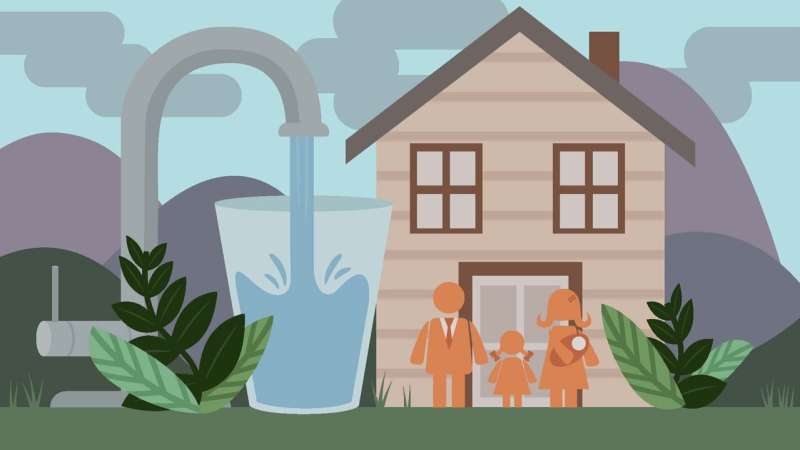A team of researchers from Wayne State University and the University of Michigan has developed a decision-making tool that helps agencies and policymakers identify implications and trade-offs between different regulations or funding guidelines prior to regulation. Credit: Alexis Wright, student, Department of Art & Art History, College of Fine, Performing and Communication Arts, Wayne State University
A team of researchers led by Wayne State University has published a study that aims to help state and local water authorities make decisions about where to prioritize funding for infrastructure improvements to drinking water pipeline replacement programs. The study, Improved Decision-Making: A Sociotechnical Utility-Based Framework for Drinking Water Investment, was recently published in ACS ES&T Engineering†
Driven by underinvestment, the investment gap between needed and available funds for the country’s drinking water and wastewater infrastructure is projected to grow to $136 billion by 2039. In the face of such a funding gap, government agencies and local utilities must make limited decisions about how to invest. available funds by prioritizing public water systems with the most profit.
According to the research team, states should prioritize funding projects not only to ensure compliance with the Safe Drinking Water Act — the national drinking water regulation — but also to maximize public health benefits.
The Wayne State and University of Michigan research team has developed a decision-making framework that combines drinking water quality characteristics with community and environmental quality characteristics.
“Drinking water infrastructure suffers from a lack of data,” said Sara Schwetschenau, Ph.D., a former postdoctoral fellow of Civil and Environmental Engineering at Wayne State and current postdoctoral researcher at the Columbia Water Center at Columbia University. As a result, decisions are based on limited water system data and often without context for general environmental exposures. Yet people do not experience health risks from water independently of other forms of environmental risks and this perspective should be incorporated into infrastructure decision-making. This method was developed in response to these concerns and aims to help water utility decision-makers leverage existing data sources, water data and other demographic and exposure data to improve their existing decision-making practices.”
In addition, this new decision-making tool will help agencies and policy makers identify implications and trade-offs between different regulations or funding guidelines prior to regulation.
“Using this tool will help policymakers understand the greatest benefits that can be realized,” said Shawn McElmurry, Ph.D., professor of Civil and Environmental Engineering at Wayne State. “Policy makers will have a better understanding of the sensitivity of funding allocation decisions and will be better able to identify communities that are at increased risk of lead exposure and are most at risk for adverse health effects or have a decreased ability. to cope as a result of exposure.”
Sara E. Schwetschenau et al, Improved decision making : a sociotechnical utility-based framework for drinking water investment, ACS ES&T Engineering (2022). DOI: 10.1021/acsestengg.2c00008
Quote: New study provides framework for prioritizing investments in drinking water systems (2022, July 13) retrieved July 13, 2022 from https://phys.org/news/2022-07-framework-prioritizing-investment.html
This document is copyrighted. Other than fair dealing for personal study or research, nothing may be reproduced without written permission. The content is provided for informational purposes only.

